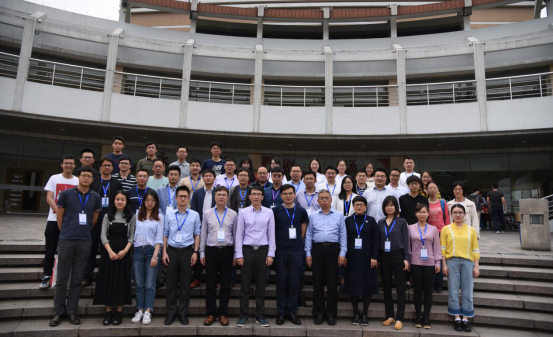On the morning of May 16th, the 4th International Conference on Microstructures and Properties of Materials organized by School of Materials Science and Engineering of Zhejiang University and Zhejiang Materials Research Society was held as scheduled at Shaoyifu Science Building. More than 300 teachers and students from over 60 universities and research institutes at home and abroad came to attend the conference. Prof. Zhang Ze (Member of Chinese Academy of Sciences) and Prof. Han Gaorong (Dean of MSE, ZJU) jointly served as the chairmen of the conference.
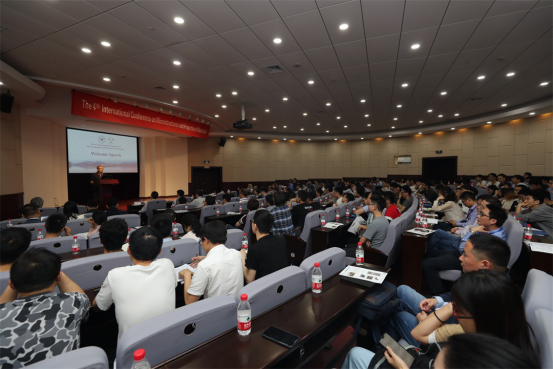
Academician Zhang Ze gave a welcoming speech for the conference and expressed warm welcome to the attendees. Zhang Ze said that China's scientific research stage is broad, and so that our researchers must make contributions to science that matches this broad stage in the new era, achieving the simultaneous innovative development in production, education and research. He then wished this conference a complete success.
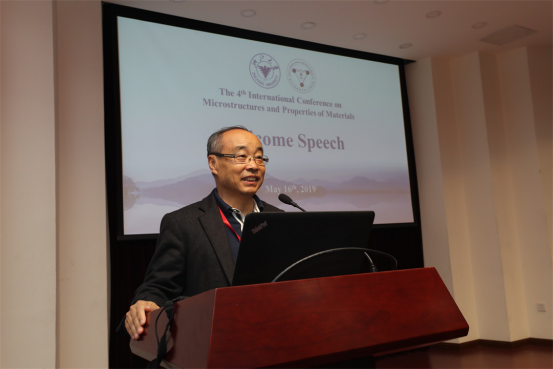
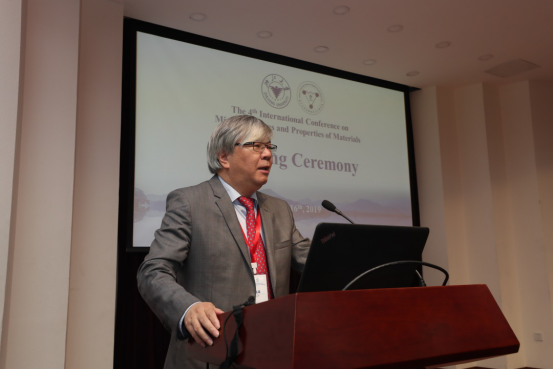
Next, Professor Li Xiang and Professor Wang Yong served as hosts of plenary talks, and four international experts brought brilliant academic reports. Professor Serena Best from Cambridge University mainly shared the design of bio-scaffold materials with three-dimensional porous structure. By adding different substances, such as silicon, into the traditional biomaterial, hydroxyapatite, to make it more biocompatible and active. Prof. Serena also gave an understanding of the physics behind the production of lyophilised porous collagen scaffolds.
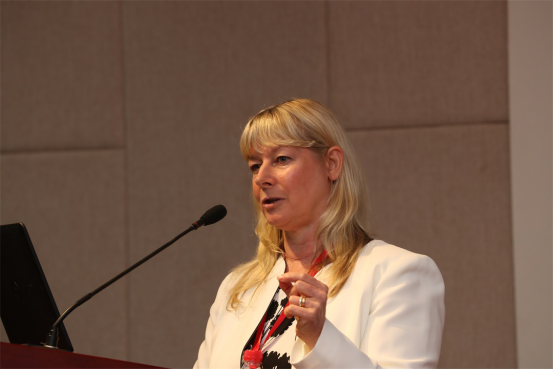
Professor Scott Mao from the University of Pittsburgh shared the research of in-situ mechanics. The report titled "In-situ transmission electron microscopy on monatomic metallic glasses processing and deformation mechanism" fully demonstrates the unique advantages of in-situ research in the field of material microstructures. He talked of the mechanism of formation of anisotropic interface, the formation process of monoatomic metallic glass, and the defects of the fcc metal surface and interface.
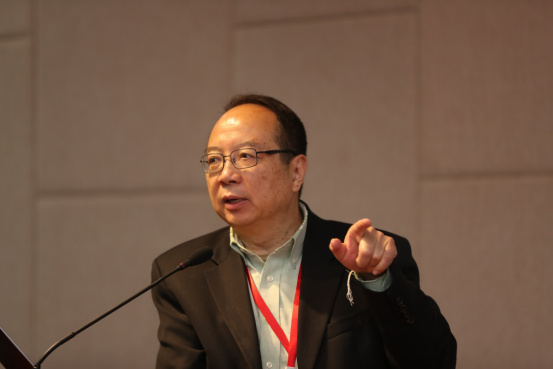
Professor Guangwen Zhou from the State University of New York began with a picture of oriented growth. Taking copper as an example, he introduced that by using the unique in-situ function of the microscope, they dynamically measured the surface structure changes and chemical reactions of copper and other metal substances under oxidation condition. Three possible means of diffusion control, that is, surface diffusion, bicrystal boundary diffusion, and surface and bicrystal boundary diffusion are proposed. Together with the first principles, he elaborated the adsorption, nucleation and growth processes of oxygen on the metal surface at the atomic scale.
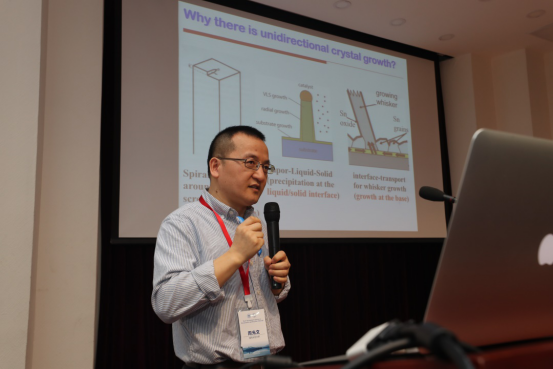
Academician Zhang Ze from MSE, ZJU gave a talk titled “In-situ Electron Microscopy Study of Advanced Material under High Temperature and Load”. He addressed the importance of in-situ research from both macroscopic scale and microscopic scale. Taking the key process of research and development of key components in the aviation industry as an example, Prof. Ze Zhang pointed out that only by seeing and tracking the dynamic changes that others can't see and track, can we achieve what others can’t do. The macro and micro fields are mutually reinforcing, so the breakthrough of technology in the frontier areas of the country requires the cooperation of researchers at both scales.
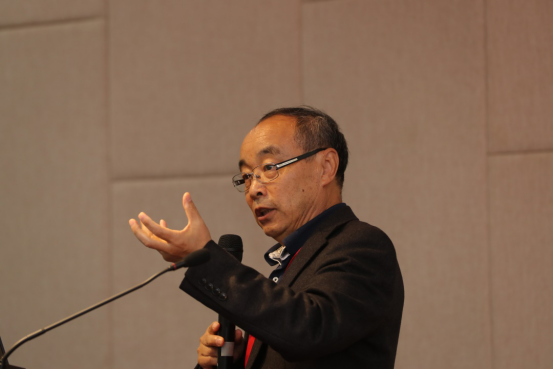
At approximately 12 o'clock, the opening ceremony and plenary talks ended. Besides plenary talks, the conference contained four symposiums, including in-situ TEM, biomaterials, optoelectronic semiconductors, and energy storage materials and battery technology, and carried out more specific and detailed report in the following days.

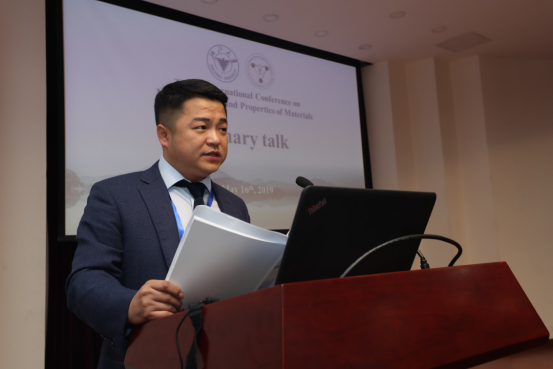
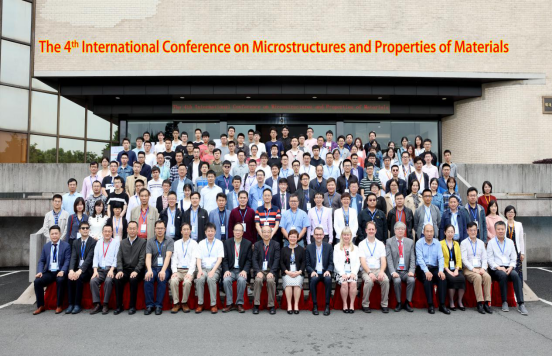
Symposium A: In-situ TEM
During the one-and-a-half-day symposium report, more than 40 experts and scholars from the United States, Japan, the Netherlands and China were invited by the organizing committee to make reports. There was “In-situ TEM observation of dynamic Frank-Read sources near heterostructured domain interface” by Professor Xiaodong Han from Beijing Tech University; “In-situ TEM observation of dynamic Frank-Read sources near heterostructured domain interface” by Prof. Yuntian Zhu from North Carolina State University; “Development of a Novel TEM Heating system and Its Application” by Professor Zhiwei Shan from Xi'an Jiaotong University; “The fifth generation of spherical aberration corrected electron microscope technology: full high voltage range (30-300kV) sub-level STEM resolution” by Dr. Dongchang Wu from Thermo Fisher; “Super Resolution Ptychographical Diffractive Imaging with Ultrafast Detector” by Professor Peng Wang from Nanjing University; “Applications of Aberration-Corrected STEM on Thermoelectric Materials” by Prof. Binghui Ge from Anhui University; “In-situ Device Microscopy” by Professor Litao Sun from Southeast University; “Magnetic Phase Transition by Lorentz Transmission Electron Microscopy” by Professor Renchao Che from Fudan University; “Atomistic and Real-time Structural Characterization in Low-dimenional Materials” by Professor Jianbo Wang from Wuhan University; “The next-generation of In situ Liquid Electrochemical Systems” by Prof. Qiang Xu from Technische Universiteit Delft; “High Performance Fuel Cell Catalysts: From In-situ Characterization to Material Design” by Prof. Jianbo Wu from Shanghai Jiaotong University; “Study of TiO2 Minority Surfaces via in-situ TEM” by Dr. Wentao Yuan of Zhejiang University; “Quantitative Electron Microscopy For Aluminum Alloys As Light-Weight Industry Materials” by Professor Jianghua Chen from Hunan University; “Atomic observations of crystal structures of low-dimensional magnetic materials and decay magnetism origins” Prof. Yong Peng from Lanzhou University; “In-Situ TEM Observations of One-Dimensional Nanomaterials” by Professor Chih-Yen Chen from Sun Yat-sen University; “Automated synthesis of catalytic nanoparticles using VSP Technology” by Dr. Roeland from Dutch company, VSparticles; “Towards quantitative mapping of the charge distribution by in-line electron holography” by Prof. He Tian from Zhejiang University; “Microstructural characterization and structure-property relationship of beam-sensitive porous materials” by Professor Yihan Zhu from Zhejiang University of Technology. In addition, there were more than 20 academic reports. The report covered all aspects of in-situ electron microscopy, and the content was rich and colorful. After each report, the attendees and the reporters had extensive and ardent communication and discussions, discussing in-depth academic issues and exploring cooperation opportunities.
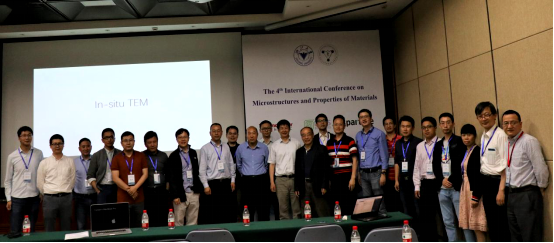
Symposium B: Biomaterials
From May 16th to 17th, 2019, the “4th International Conference on Microstructures and Properties of Materials” organized by School of Materials Science and Engineering of Zhejiang University and Zhejiang Materials Research Society was held in Shaoyifu Building at Yuquan Campus of Zhejiang University. On the afternoon of May 16th , the Biomaterials symposium started in the Room211 of Shaoyifu Building. Professor Serena Best, Fellow of the Royal Academy of Engineering (FREng) and Co-Director of the Cambridge Centre for Medical Materials, as the Co-Chair of the symposium, first gave a brief speech acknowledging her gratitude towards the organizers and attendees. During the conference, Professor Changyou Gao from the Polymer Science Department of Zhejiang University first gave a report entitled “Surface modification of biomaterials for selective cell adhesion and migration”, which provided an idea to design biomaterials with ideal cell-substrate interactions. Professor Lucy Di Silvio from King's College London presented the team's recent research on the bone tissue engineering, and surface structure and physicochemical properties of scaffold materials. Associate Professor Kefeng Ren from Zhejiang University introduced a two-step process for preparing polyelectrolyte composite coatings, and the developed macromolecular biomimetic functional coating has broad application prospects. Professor Chengtie Wu from Chinese Academy of Sciences presented a report entitled “Bioactive scaffolds: from tissue regeneration to multifunction”. In the report, Professor Wu introduced the multi-functional scaffolding materials prepared by the research group based on 3D printing and electrospinning technology in vivid language. Dr. Jie Huang from University College London presented a report on "Processing and evaluation of nanobiomaterials for healthcare engineering". Professor Kui Cheng from Zhejiang University gave a report titled "Preparation and evaluation of extracellular matrix based materials for biomedical application". He reported that complete extracellular matrix (ECM) is obtained by in vitro cell cultivate, isolation and immobilization. This ECM-based material can be fixed on the surface by polydopamine chemically and becomes a biomedical coating, which has broad practical application value. Professor Matteo Santin from University of Brighten, Professor Jianbin Tang and Associate Professor Xiang Li from Zhejiang University, and Dr. Daniel Bax from Cambridge University also brought wonderful reports. At the end of the symposium, the co-chairs of biomaterials forum, Professor Serena Best and Professor Xiang Li delivered their final speeches, applauding the exchange of ideas of this international conference, and expressed gratitude to the organizers and staff for their work. At noon on May 17th, the one-and-a-half-day biomaterials symposium of the “4th International Conference on Microstructures and Properties of Materials” successfully concluded.
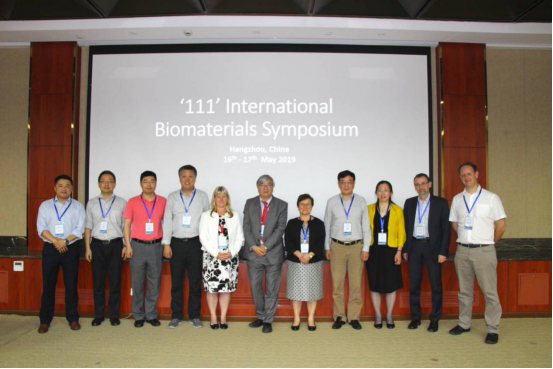
Symposium C: Optoelectronic Semiconductors
In order to promote the exchange and cooperation of materials research and promote the construction of first-class materials discipline, School of Materials Science and Engineering of Zhejiang University and Zhejiang Materials Research Society successfully held the “4th International Conference on Microstructures and Properties of Materials” in Hangzhou, Zhejiang Province from May 16th to 17th, 2019. After the main conference report, the “4th International Conference on Microstructures and Properties of Materials Symposium C: Optoelectronic Semiconductors” led by Professor Zhizhen Ye was also successfully launched at the Yongqian Theater. Prof. Zhizhen Ye first delivered a speech and warmly welcomed the arrival of academic scholars from near and far. He also raised ardent expectations for the students who attended the lecture, and briefly introduced the following schedule and announced the beginning of the symposium. The report invited Professor Ning Dai from Shanghai Institute of Technical Physics of the Chinese Academy of Sciences; Professor Shaozhi Deng from Sun Yat-sen University; Professor Xia Guo from Beijing University of Posts and Telecommunications; Professor Jun Zhou from Huazhong University of Science and Technology; Professor Jianhua Zhang from Shanghai University; Professor Jianpu Wang from Nanjing Tech University; Professor Xinchang Wang from Zhengzhou University; Professor Yujia Zeng from Shenzhen University; Professor Hongwen Huang from Hunan University; Professor Yumin Ye from Ningbo University and those who are active academic researchers in the field of optoelectronic semiconductors. They not only introduced their research progress and achievements in various academic fields, but also raised their own problems and profound insights in the field based on their years of research experience. Every time a professor’s report ended, with the questions from and heated discussions between the teachers and students, the sparks of ideas came out more and more. During the short tea break, the professor and the students also had some brief talks and students were encouraged to actively participate in the academic work. At the end of the report, Professor Zhizhen Ye spoke highly of the wonderful reports of the professors, and put forward his own academic insights on optoelectronic semiconductor materials. He also raised his expectations for the development of scientific research and industry, and encouraged the students to learn from the teachers and strive to be a double first-class student. The successful symposium has provided a good academic exchange and display platform for many academic scholars and professors who are active in the optoelectronic materials field. It also provides a very good learning platform for teachers and students, meaning a lot in many respects.
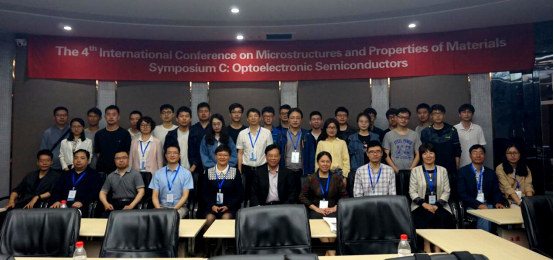
Symposium D: : Energy Storage and Battery Technology
From May 16th to 17th, 2019, the “4th International Conference on Microstructures and Properties of Materials (MPM-4) Symposium D: Energy Storage and Battery Technology” organized by School of Materials Science and Engineering of Zhejiang University and Zhejiang Materials Research Society was held in Yongqian Theater at Yuquan Campus, Zhejiang University. This symposium aims to focus on the cutting-edge scientific and technological progress of energy storage materials at home and abroad. The symposium was jointly chaired by Professor Jiangping Tu and Professor Hongjin Fan from Nanyang Technological University in Singapore, and Professor Xinhui Xia served as the secretary. The conference began with the report of Prof. Hongjin titled “High-performance electrode materials for high-rate Na-ion storage”. He shared the research results of his own team in recent years, introducing in detail the status quo and progress of research in electrode materials in recent years. In the one-and-a-half-day session, the top experts and scholars from famous universities and institutes at home and abroad such as Nanyang Technological University in Singapore, University of Adelaide in Australia, Drexel University, Harbin Institute of Technology at Weihai, Soochow University and Ningbo Institute of Industrial Technology, shared their research experiences, work ideas and academic views. The atmosphere of the meeting was lively, and the sparks of knowledge appeared frequently. The exchanges were deep, and many targeted and constructive opinions and suggestions were put forward. Between the reports, the attendees also had heated discussions with the reporters, sharing insights of academic issues, and expecting to explore opportunities for cooperation. This symposium provided a good academic exchange and display platform for researchers of energy storage materials, and expanded the horizons of everyone and enhanced the awareness of further cooperation. We believe that this symposium will lay a good foundation and provide broad and creative ideas for the further research and development of electrochemical energy storage materials in the future.
